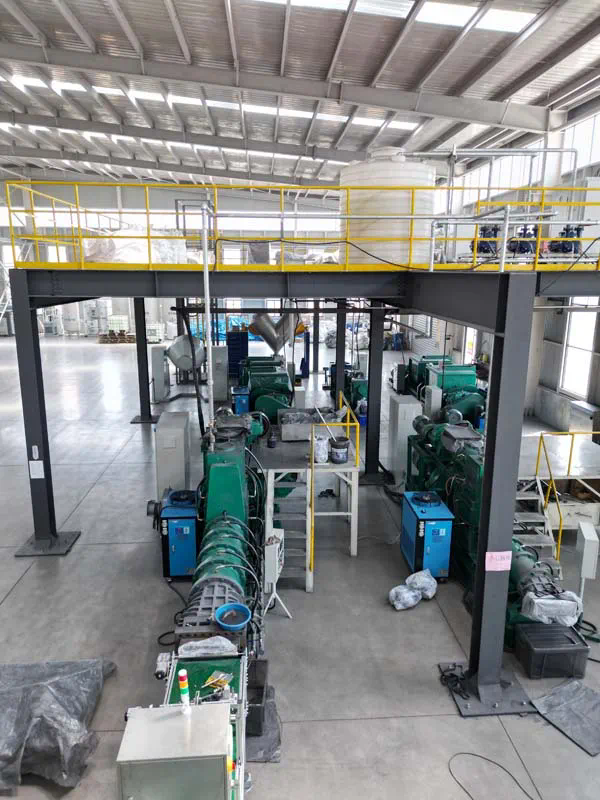Pipe and tube bending technologies have experienced significant innovations in the 21st century, revolutionizing the manufacturing and construction industries. These advancements have brought about improvements in efficiency, precision, and versatility, allowing for the creation of complex and customized structures. From the introduction of computer-controlled bending machines to the development of new materials, the 21st century has witnessed remarkable progress in the field of pipe and tube bending.
Innovations in Computer-Controlled Bending Machines

One of the most significant advancements in pipe and tube bending technology in the 21st century is the widespread adoption of computer-controlled bending machines. These machines, equipped with sophisticated software and precision controls, enable manufacturers to achieve highly accurate and repeatable bends. The integration of computer-aided design (CAD) and computer-aided manufacturing (CAM) software has further enhanced the capabilities of these machines, allowing for the production of complex and intricate geometries with minimal setup time and material waste.
The introduction of servo-electric bending machines has also contributed to the advancements in precision and control. Unlike hydraulic bending machines, servo-electric machines offer precise control over the bending process, resulting in high-quality bends with minimal distortion. This level of precision has opened up new possibilities for industries such as aerospace, automotive, and medical equipment manufacturing, where tight tolerances are critical.
Furthermore, the integration of robotics and automation has streamlined the pipe and tube bending process, reducing manual labor and increasing production throughput. Automated loading and unloading systems, coupled with real-time monitoring and quality control, have improved overall efficiency and consistency in bending operations.
Development of New Materials and Alloys
Another key innovation in pipe and tube bending in the 21st century is the development of new materials and alloys that offer enhanced strength, corrosion resistance, and formability. Advanced high-strength steels, duplex stainless steels, and nickel-based alloys have become increasingly prevalent in various industries, presenting new challenges and opportunities for pipe and tube bending processes.
The ability to bend these advanced materials without compromising their mechanical properties requires specialized tooling and expertise. Innovations in tooling materials, such as carbide and diamond-coated dies, have extended the lifespan of bending tools while maintaining the required precision and surface finish. Additionally, the use of laser-based measurement systems has enabled real-time monitoring of the bending process, ensuring the integrity of the material during forming.
Furthermore, the development of composite materials, such as carbon fiber-reinforced polymers (CFRP), has expanded the possibilities for lightweight and high-strength structural components. Advanced composite materials present unique challenges in terms of bending and forming, driving the need for innovative bending techniques and tooling solutions https://cnmtrollformingmachinery.com/sw/drywall_stud_and_track_forming_machine/sw_Logical_wall_structural_wall_stud_and_track_rolling_forming_machine_C_stud_U_channel_roll_forming_machine.html roof sheet machine for sale tailored to these materials.
Advancements in Tube End Forming and Finishing
Tube end forming and finishing processes have also seen significant advancements in the 21st century, enabling the creation of complex end geometries and surface finishes. Traditionally, tube end forming involved processes such as expanding, reducing, and flaring, which were limited in their capabilities and flexibility.
The introduction of multi-station end forming machines equipped with computerized controls has allowed for the production of a wide range of end forms, including beads, flanges, and swages, with high precision and repeatability. These machines often incorporate quick-change tooling systems, enabling rapid setup for different part geometries and sizes.
In addition to end forming, advancements in tube finishing technologies have led to improved surface quality and functionality. Processes such as polishing, brushing, and coating application have been optimized to meet stringent aesthetic and functional requirements in industries such as architectural design, furniture manufacturing, and automotive applications. Furthermore, the integration of inline inspection systems has ensured the consistent quality of finished tube products, reducing the need for post-production rework.
Integration of Additive Manufacturing in Tooling and Fixturing
The integration of additive manufacturing, or 3D printing, has had a transformative impact on the design and production of tooling and fixturing for pipe and tube bending processes. Additive manufacturing allows for the creation of highly complex and customized tooling components with reduced lead times and costs. This capability has enabled the rapid prototyping and optimization of bending dies, mandrels, and support tooling, leading to improved process efficiency and part quality.
The use of advanced materials, such as tool steel powders and high-temperature alloys, in additive manufacturing has further expanded the applicability of 3D-printed tooling for high-volume and high-temperature bending applications. The ability to produce conformal cooling channels and intricate geometries has improved the thermal management and durability of bending tools, contributing to enhanced performance and tool life.
Moreover, the customization of fixturing and support structures through additive manufacturing has facilitated the handling and manipulation of complex tube geometries during bending operations. Custom-designed support mandrels, pressure dies, and clamping fixtures have enhanced the stability and accuracy of the bending process, particularly for non-standard or asymmetrical tube profiles.
Challenges and Opportunities in Smart Bending Technologies
The emergence of smart bending technologies, encompassing the integration of IoT (Internet of Things), data analytics, and predictive maintenance, presents both challenges and opportunities for the pipe and tube bending industry. Real-time monitoring and data collection from bending machines have enabled the generation of actionable insights for process optimization, predictive maintenance, and quality assurance.
However, the implementation of smart bending technologies requires robust cybersecurity measures to safeguard sensitive manufacturing data and intellectual property. The connectivity of bending machines to external networks and cloud-based platforms necessitates stringent protocols for data encryption, access control, and network resilience.
Additionally, the utilization of machine learning and AI (Artificial Intelligence) algorithms for predictive maintenance and process optimization demands expertise in data analysis and algorithm development. The interpretation of complex manufacturing data and the implementation of AI-driven decision-making processes represent a paradigm shift in traditional bending operations, requiring a multidisciplinary approach involving engineering, data science, and automation.
Furthermore, the integration of augmented reality (AR) and virtual reality (VR) technologies in training and process visualization has the potential to revolutionize the skill development and knowledge transfer in the pipe and tube bending industry. AR-assisted setup and troubleshooting procedures can enhance the efficiency and accuracy of bending machine operation, reducing the reliance on specialized expertise and experience.
Conclusion
The 21st century has been marked by remarkable innovations in pipe and tube bending technologies, driven by the convergence of digitalization, materials science, and manufacturing automation. The advent of computer-controlled bending machines, the development of new materials and alloys, and the integration of additive manufacturing have transformed the capabilities and possibilities of pipe and tube bending processes.
As smart bending technologies continue to evolve, the industry faces new challenges and opportunities in leveraging data-driven insights, cybersecurity, and advanced training methodologies. The pursuit of sustainable, efficient, and agile bending solutions will shape the future of manufacturing and construction, paving the way for groundbreaking applications in diverse sectors ranging from infrastructure development to renewable energy.
Overall, the 21st century has set the stage for a new era of innovation and excellence in pipe and tube bending, propelling the industry towards unprecedented levels of precision, efficiency, and adaptability.
https://smartfactoryinsights.com/



